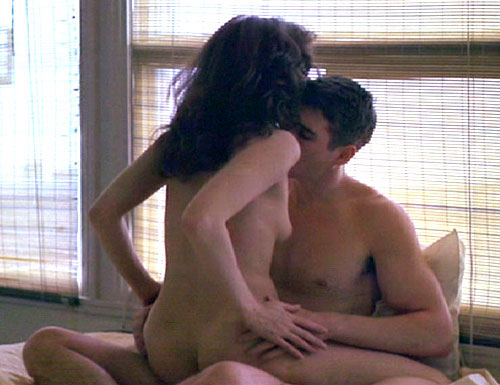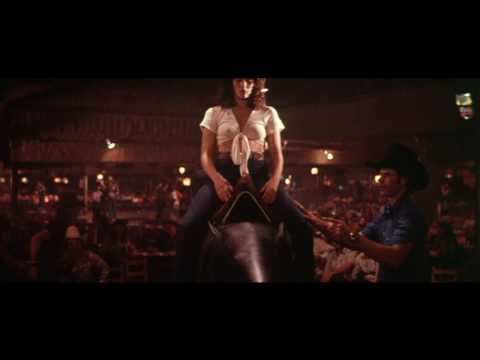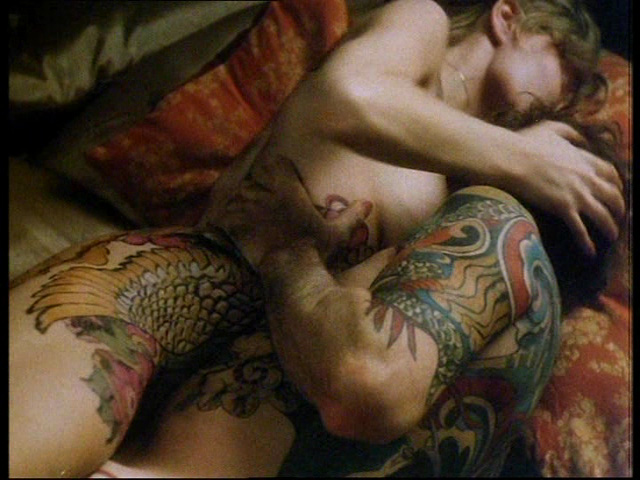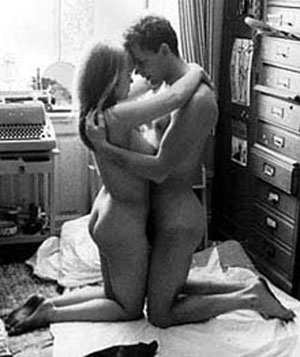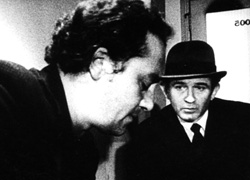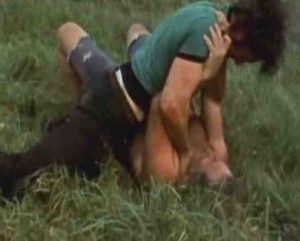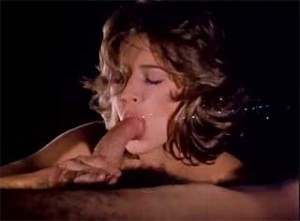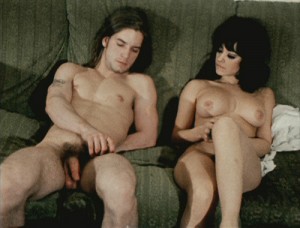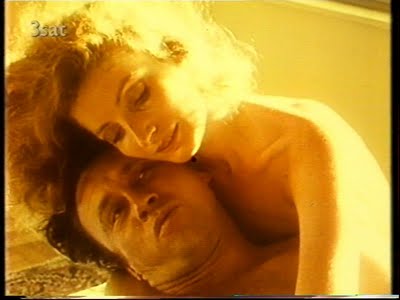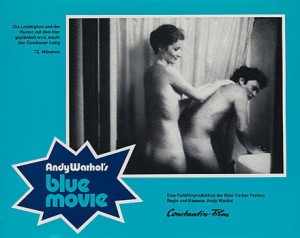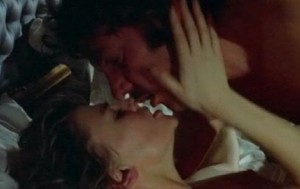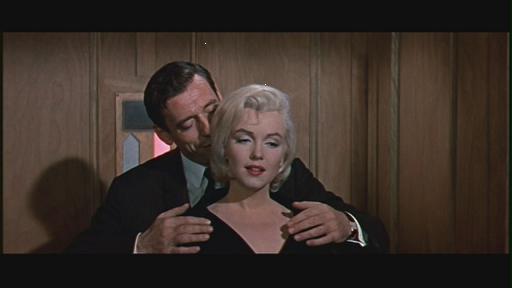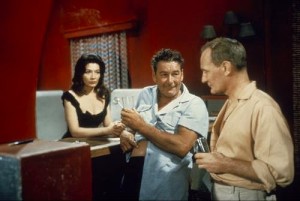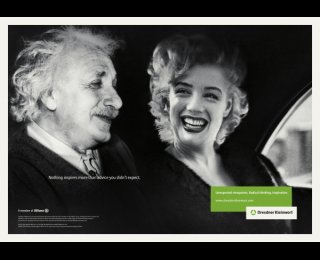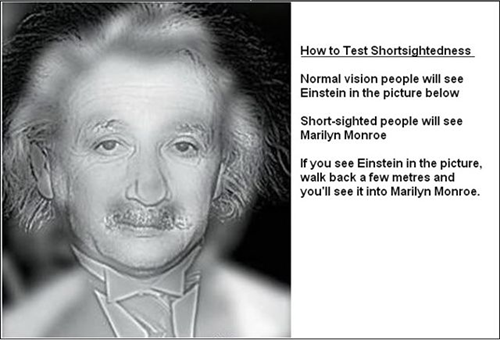Written for the magazine Forum and published there in 1984. If I still have the published version, which would pinpoint the particular month and issue, I can’t locate it (although based on a tip from Barry Scott Moore, I think it may have been the February issue). For better and for worse, this is probably the most popular item on this site. — J.R.
The white morning sunlight, intensely brilliant, radiates through the open window as he sits propped up with pillows. She, also naked, sits quietly in his lap, her legs folded neatly under her, facing and kissing him with little pecks through her loose and undulating tangle of hair, both of them intermittently moaning with contentment. The two of them are fucking — or so it seems. The movie is An Officer and a Gentleman. They’re in a motel bedroom. He’s an air force officer trainee named Zack Mayo, played by Richard Gere. She is Paula, his girlfriend who works at the local paper mill, played by Debra Winger. As Pauline Kael aptly describes her, she sports “the world’s most expressive upper lip (it’s almost prehensile),” which “tells you that she’s hungrily sensual.” (A couple of years back, gleefully astride a wild, mechanical bucking bronco in Urban Cowboy, her sensual greed was no less apparent.)
Gere buries his face in Winger’s breasts, and between short gasps of pleasure they make banal conversation about whether or not one of them should go fetch a towel — a project that is abandoned as soon as it becomes clear that neither one can bear to break away from the other. In a throaty giggle, she fantasizes the two of them being found weeks later in the same position, shriveled up and inseparable….But are they really fucking, or is it only movie magic?
***
“Real sex in movies?” The voice on the phone is incredulous, and it’s not hard to figure out why. My friend in Hollywood is willing to help me hound down some hard facts if he can, but this time I’ve pitched him an impossible curve. “That’s almost a contradiction in terms,” he says. “I mean, I know there are a few stories about it that make the rounds out here — they’re always the same ones, too — but let’s be practical. If a couple really does screw while the cameras are rolling, do you think they’re gonna want to blab about it afterwards? “Conversely,” my informant goes on, “I can think of piles of theoretical cases where it probably didn’t happen, but some press agent looking for the right kind of hype starts up these weird rumors — or else encourages other people to spread them in order to help the publicity. So what’s the point of asking real people about it? Where does it get you? And why should anyone be truthful about it? It’s all in the mind of the beholder, anyway. The important thing isn’t whether it actually happens. It’s whether an audience thinks it does.”
***
Take a straw poll among your friends, like I did, about whether Winger and Gere are really doing it to one another in that brief but memorable fucking scene. Whatever they tell you will reveal more of the movie’s meaning and impact than any possible interview with the actors or director could, because it’s your friends who have the final say about it. As paying customers, you might even say that they’re entitled to this power. A twenty-three year-old male jazz drummer I know told me that Gere and Winger’s lovemaking was too sincere not to be real — an opinion that concurred, more or less, with the response of a forty-one year-old female writer I know who told me the fucking looked pretty convincing to her. But, for whatever it’s worth, these friends are both east coasters without any close ties to the film industry, and neither has had much experience with filmmaking (although the writer sometimes writes film criticism in her spare time). By contrast, two Hollywood chums of mine, both with lots of industry contacts and experience around soundstages, report to me the same rumor — that Winger complained to the producer at some point that Gere wasn’t making it with her, either on screen or off.
Who are the experts in this matter? Winger and Gere, obviously. But conflicting rumors about such things are not uncommon. Not so long ago, Bruce Dern was boasting about doing it to Maude Adams in Tattoo, while Adams sanguinely countered that her leading man was mistaking an erection for a fait accompli. And consider this: whether Gere and Winger confirm, deny, remain taciturn or contradict one another about the veracity of their on-screen sex, the people who buy tickets to An Officer and a Gentleman are still free to think what they like. Tell them nothing really happened and they might holler back that you’re full of it. Tell them that real humping was going on, and they might grow suspicious, or at the very least skeptical. (“Really? Under all that makeup, beneath all those heavy-duty lights? Between takes too, or do they stop and then start up again for each new camera setup? And what about retakes?”)
Part of the problem clearly has something to do with the nature of film illusion itself. It’s good to remember that back in the Swinging Sixties, the eventual survival and success of the bawdy Swedish flick I Am Curious (Yellow) over censor boards and bluenoses brought straight fucking into the respectable range of the legit arthouse — but more as a subject than as an actual ongoing practice. A little later, one could see Last Tango in Paris ratify this social victory in terms that were more stylish and aesthetically potent — a concerted step away from neorealism and towards expressionism, thanks to the combined romantic bombast of actor Marlon Brando, saxophonist-composer Gato Barbieri and director Bernardo Bertolucci. Like the painter Francis Bacon, whose anguished canvases provided the backdrop for the film’s credits, all these artists were masochistically sexy to begin with insofar as each, in a different way, had perfected the art of shreiking. 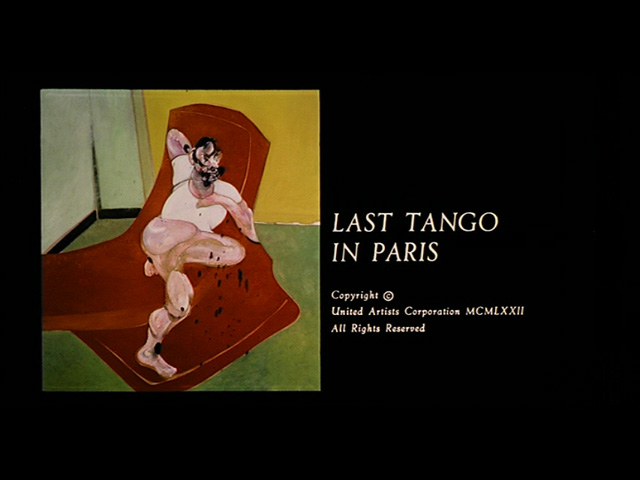
With the advent of the kinky Tango, expert simulation, stimulation and evocation quickly became the names of the game, so that outside the relatively marginal territory of hardcore porn — where penetration was always crystal-clear, even when the focus wasn’t — sex could be regarded as the ultimate special effect. This means that what usually matters most about sex in movies is whether it convinces us or not, not whether it’s real. After all, a genuine, dyed-in-the-wool, honest-to-Pete fuck on screen may look totally unpersuasive, and thereby spoil the whole show, whereas a triumph of collective artifice might succeed better in educating us all about very real things. It all depends on a complex chemistry of factors. Not every theorist of sex in movies would agree on this point — certainly not a purist like Norman Mailer. Indeed, the aesthetics of Mailer (as writer and performance artist) are offended outright by the simulations of sex between Brando and Maria Schneider in Last Tango. Considering the highly transparent layers of artifice which form the substance of Mailer’s own unsuccessful, low-budget independent features — such as Mailer himself playing a homicide squad detective lieutenant with an Irish brogue in Beyond the Law (1968), a simulation if there ever was one — this may look like a form of inconsistency; but in fairness to Mailer, there is a very “real” fight between him and actor Rip Torn at the end of the 1969 Maidstone.
As Mailer suavely puts it, harking back to the character Brando played in A Streetcar Named Desire, “Abruptly Brando cashes the check Stanley Kowalski wrote for us twenty-five years ago — he fucks the heroine standing up.” But Mailer and the legend of Method acting are both brought up short by the fact that Brando and Schneider don’t actually do it on camera; it’s just a ferociously good job of pretending. (“We were never screwing on stage,” Schneider told a reporter.) Forever the idealist and visionary, Mailer sees this failure intimately bound up with the whole meaning of film: “Brando’s real cock up Schneider’s real vagina,” he argues, “would have brought the history of film one huge march closer to the ultimate experience it has promised since its inception (which is to re-embody life).” In this respect, his opinion matches that of porn superstar Marilyn Chambers, of Behind the Green Door fame, who hotly insists, “Simulated sex is out.”
But this assumes that the spectator will always recognize and appreciate The Real Thing when it comes along. Admittedly, this is easy enough to do in a Marilyn Chambers or Linda Lovelace flick, and it might equally hold true for a borderline case like Trash or Blue Movie. In Paul Morrissey’s Trash (1970), for example, there’s no doubt in anybody’s mind that topless gogo groupie Gerri Miller is trying very hard to give Joe Dallesandro (who plays an impotent junkie) a proper blowjob in the opening scene. Similarly, in Andy Warhol’s Blue Movie (originally known as Fuck), made the same year, there isn’t much question that Viva and Louis Waldon can sporadically be seen getting it on — as well as gossiping, kvetching, taking a bath and getting bored together. (Not exactly in sync with this were the apparent fits of boredom suffered by Warhol at the camera, who at unexpected junctures in the ongoing sex or dialogue would cut away from his actors to focus on a stray corner of the room.)
***
According to industry scuttlebutt, the suggestively named Fabio Testi did it to Jenny Agutter during the shooting of their passionate and adulterous sex scene beside a waterfall in China 9, Liberty 37 (1978), an offbeat Western of cult director Monte Hellman. Similar stories, true or not, circulate about the unbridled lovemaking between Julie Christie and Donald Sutherland in a plush hotel suite in Venice in the thriller Don’t Look Now; in this case, one also hears that the director of the film, Nicolas Roeg — an apparent follower of and believer in the Mailer Doctrine — insisted on real screwing for verisimilitude.

 Back in the Twenties, the spectacular and opulent orgies that were set in motion and filmed by genius director Erich von Stroheim for silent classics such as The Merry Widow [see above], The Wedding March, and Queen Kelly were the source of even more rumors and wild speculation. Needless to say, most of the resulting footage from these sessions never wound up on the screen, and only a few lascivious fragments of these bordello extravaganzas have filtered their way down to us today — a shot here, a still there. But many of the stories remain. With the resources of a large studio at his disposal, Stroheim would order up champagne, caviar, squab and other delicacies, hire exotic prostitutes of many nationalities and specialties (e.g., an Austrian female sadist “of the Wanda school,” reportedly “skilled in the application of the ‘spider,'” and a pair of attractive Siamese twins), close the sets, start the cameras going, and have spirited fun and games for hours. Such, at any rate, is the impression given by Underground filmmaker and pop historian Kenneth Anger, who in an early edition of his infamous Hollywood Babylon also claimed that even a trained dog was invited to participate in some of the revelries staged for The Merry Widow. (Anger also speculates that Stroheim’s willful expenditures and filming of salacious material that he knew would never reach the screen were motivated in part by revenge for the artistic ravages and frustrations Stroheim had suffered on Greed at the selfsame studio.)
Back in the Twenties, the spectacular and opulent orgies that were set in motion and filmed by genius director Erich von Stroheim for silent classics such as The Merry Widow [see above], The Wedding March, and Queen Kelly were the source of even more rumors and wild speculation. Needless to say, most of the resulting footage from these sessions never wound up on the screen, and only a few lascivious fragments of these bordello extravaganzas have filtered their way down to us today — a shot here, a still there. But many of the stories remain. With the resources of a large studio at his disposal, Stroheim would order up champagne, caviar, squab and other delicacies, hire exotic prostitutes of many nationalities and specialties (e.g., an Austrian female sadist “of the Wanda school,” reportedly “skilled in the application of the ‘spider,'” and a pair of attractive Siamese twins), close the sets, start the cameras going, and have spirited fun and games for hours. Such, at any rate, is the impression given by Underground filmmaker and pop historian Kenneth Anger, who in an early edition of his infamous Hollywood Babylon also claimed that even a trained dog was invited to participate in some of the revelries staged for The Merry Widow. (Anger also speculates that Stroheim’s willful expenditures and filming of salacious material that he knew would never reach the screen were motivated in part by revenge for the artistic ravages and frustrations Stroheim had suffered on Greed at the selfsame studio.)
Back in 1956, there were plenty of steamy reports in the press about the equivalent of Method acting that writer-director Roger Vadim was requiring from his own newlywed bride Brigitte Bardot, 21, and her romantic costar Jean-Louis Trintignant, 25, in And God Created Woman. This was Vadim’s first feature, and the French director, determined to scandalize the straight-laced public and forge a hit, centered a lot of attention on the fictional wedding day of Bardot and Trintignant in St.-Tropez on the sunny Riviera.
In a saucy scene that went perfectly with Bardot’s own pert impudence, Vadim showed husband and wife retreat upstairs to bed immediately after the ceremony, leaving in consternation his family and the assorted wedding guests, who collectively hem and haw their way through a festive lunch. Then Bardot shows up unannounced in a bathrobe, pays her respects, loads a plate or two with chicken and lobster, and grabs a bottle before returning to her hungry spouse upstairs. 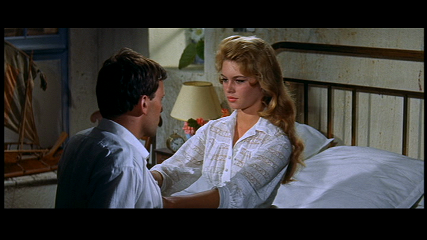
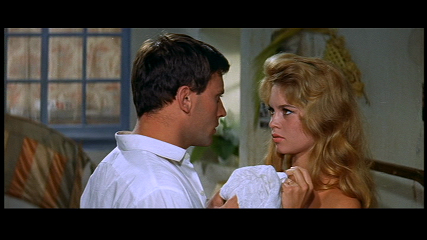
After this long build-up, Vadim switched next to a torrid encounter between the couple which began with La Bardot, playfully wrapped in a bedsheet, obligingly wrapped in a bedsheet, obligingly unwrapping herself long enough to invite Trintignant’s gaze and embrace before enclosing them both, mummy-like, in billows of white. [2011 note: Alas, this part of the scene is missing from the Criterion transfer available in the U.S.] According to observers on the set, Vadim was encouraging the couple to work themselves up into such a wet and giddy frenzy that their juicy kisses and hot embraces would continue for some time after he called out, “Cut!” It was apparently only a matter of time before an affair between the costars started for real outside of camera range — all with the tacit approval and blessing of Bardot’s lenient director and real hubby.
***
According to glamor columnist Earl Wilson, “Carroll Baker used to take the attitude that the actress had to have an affair with the leading man to make it realistic on screen.” “I feel it’s a lot of nonsense,” Sarah Miles shot back at Wilson when he cited this notion. “It’s like saying you have to get drunk to play a drunk scene. Nonsense! You’d play it much better if you were sober. I would.” For acting couples, married and otherwise, who are fucking on a regular basis when they aren’t working, the distinction might be a relatively academic one. Watching such teams interrelate in love scenes may become enhanced if one contemplates the real-life intimacies that often seem to underline their performances. Recollected mutual pleasures sometimes have a way of glowing in such circumstances — or so it seems. (In some cases, of course, it may be that our own remembered experiences of these stars in other films play a role as well.)
Consider such famous screen duos as Spencer Tracy and Katherine Hepburn, Humphrey Bogart and Lauren Bacall, Elizabeth Taylor and Richard Burton, Marilyn Monroe and Yves Montand (Let’s Make Love), Nathalie Wood and Warren Beatty (Splendor in the Grass), Julie Christie and Warren Beatty (McCabe and Mrs. Miller), and Diane Keaton and Warren Beatty (Reds). With the wealth of associations provided by these couples alone, one could probably put together enough hardcore mainstream fantasies to stock a film festival. Warren Beatty, one learns from James Bacon’s Hollywood is a Four Letter Town, can also be credited with inventing the expression (and subsequent movie title), “What’s new, pussycat?” It seems that Beatty, while staying in the house of producer Charles Feldman, used the phrase so often on the phone with various girlfriends that Feldman was eventually inspired to build a multi-million-dollar property out of it.
This reminds one that a lot of real sex in movies doesn’t take place while the cameras are running, but is nevertheless so close to the shooting action that it undoubtedly lends a kick to the on-screen happenings. Bacon, who proves to be an expert in such lore in Made in Hollywood, has many funny tales to tell about Hollywood celebrities who liked to be sexually serviced during their lunch and coffee breaks. There’s the rather extreme case of Errol Flynn, for instance, on location in Africa for The Roots of Heaven, coercing a Belgian doctor into supplying him with enough penicillin so that he could comingle all night long with the young maidens in a 96% syphilitic Ubangi tribe, and proudly declare afterwards, “One has never had one’s cock sucked until sucked by those Ubangi lips.”
During the previous decade, in the Forties, Warners director Michael Curtiz — the Hungarian pro who helmed Casablanca — liked to receive blowjobs during his lunch breaks. These were generally performed by a “particularly sexy and voluptuous extra” who always had bit parts in his movies. “Usually Mike did this in his office or dressing room,” Bacon explains, but during one picture — in which, oddly enough, Ronald Reagan was one of the stars — Mike took the girl to a used interior set on a far corner of the soundstage.” Little did Curtiz realize, however, that crew members from all around had gathered in the gangways overhead to watch. That knowledge was to come only after Curtiz climaxed, and gazed up at the ceiling to find a grinning crowd looking down at them….
***
Subjects for further research: To round off this mini-survey, one also has to consider Leslie Howard, who reportedly used to travel everywhere with a phony secretary who would service him whenever he had a few spare moments. And one of my Hollywood friends informs me, “As far as between takes goes, in Joe Morella and Edward Z. Epstein’s Lana, there are various anecdotes of Lana Turner screwing stagehands between scenes.” In comparison with the relative impersonality of such transactions are the no less predatory sex fantasies of Marilyn Monroe, as recounted by her one-time friend and flatmate Shelley Winters, in her recent autobiography Shelley. If, as suggested above, sex in movies is ultimately in the mind of the dreaming spectator, it’s hard to think of a kinkier potential movie of the mind than Marilyn’s private list circa 1951 of the gents she’d most like to fuck: Zero Mostel, Eli Wallach, Charles Boyer, Jean Renoir, Lee Strasberg, Nick Ray, John Huston, Elia Kazan, Harry Belafonte, Yves Montand, Charles Bickford, Ernest Hemingway, Charles Laughton, Clifford Odets, Dean Jagger, Arthur Miller and Albert Einstein.
A postscript and punchline to this singular list: After Monroe’s death, when many of her belongings were sent to Lee Strasberg, Shelley Winters reports that “there on Marilyn’s mother’s white baby grand I saw a large framed photograph of Albert Einstein. On it was written, “To Marilyn with respect and love and thanks, Albert Einstein.”
Final question: Did Monroe and Einstein really do it? Did Richard Gene and Debra Winger? Did Julie Christie and Donald Sutherland? Pedantically speaking, we’ll probably never know. Aesthetically and practically speaking, as consumers with imaginations, the choice is ours.

